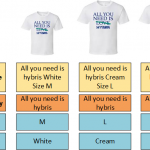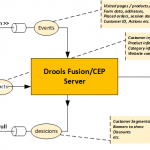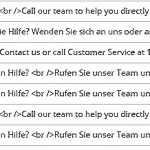In this article, I am going to tell you about undocumented/poorly documented capabilities of the ImpEx Engine. There are also a number of the nontrivial usage patterns that can be useful in your projects. Read More »
This article is focused on the storefront-related changes in hybris 6.2, specifically in HTML templates, styles and javascripts. If you are considering an update to 6.2 from the previous versions (especially, hybris 6.1), this information should be useful. Read More »
In October 2016, SAP introduced hybris 6.2. This technical reference lists all new and updated itemtypes, attributes and beans. They generally have self-explanatory names, so this information will help you to get a starting point for a deeper research. Read More »

Variants are a common concept in e-commerce systems: products that differ in some aspect from one another but are based on the same model. In this article I explain five different architecture design patterns used for the product variant modeling. Examples, pros and cons, special cases, limitations. Read More »

A geofence is a virtual perimeter or a fence around a geographical real-world area of interest. In this article I introduce a proof-of-concept that demonstrates the power of geofencing in the e-commerce. The available delivery and payment methods, delivery cost and time calculations, product prices and taxes can depend on geographical areas the customer is in. Read More »

In this post, I would like to introduce the first results of Drools Fusion and Hybris integration. The solution explained in this article will allow you to create customer behavior driven e-commerce websites with real-time personalization and customer segmentation capabilities. The approach can be also used for the monitoring and the lean data processing. Read More »

Some information displayed on the hybris-powered website is likely not editable via back office tools if you use the default hybris. Actually, there are thousands of hard-coded phrases and words in the storefront templates. This article introduces an extension that allows you to move all this stuff in the database to be able to manage this information via backoffice. Read More »

Travel Accelerator is a great foundation for creating full-featured booking systems for small and medium-size transport service providers such as public transit companies or airlines. In this article, you will learn what the Travel Accelerator can do (and also it’s limitations), key concepts, the architecture of the solution as well as how to launch it with hybris 6.1 (the default version is not compatible with 6.1 yet). Read More »

Query caching is a common feature of the database layer that feature that caches the result set returned by each query which enables the identical selects to execute faster as the data fetches from the in memory. Unlike the database query cache, the Hybris Query Cache doesn’t analyze the functions used in the query, and eventually it caches everything. It means that if your query uses datetime functions such as NOW() or TIMESTAMP(), you will possibly have the same result as you get a minute ago (and that is incorrect behavior for current time-dependent queries)
Anyone knows that it is against the feng shui principles of the clean code to use datetime functions in the database requests, but it is good to know that the hybris persistence layer can’t handle these deviations properly. Read More »

The inventory management is one of the challenging topics in e-commerce. As a part of my research, I came up with some best practices in this area. In this article, you can find information about the inaccurate inventory records and inventory balance discrepancies as well as techniques to compensate the inventory record errors and stock update delays. I explain the details on stock data importing: integration interfaces, data guaranteed delivery, failover and error handling, mass update specifics. In this article, I go over the architecture of the lean stock update that could be useful for marketplaces with millions of products and distributed warehouses. You find out the details about data anomalies and how to process products with multiple product units, using the stock history, and rule-based product availability. Also I’ll provide a large topic about the stock management for different types of product bundles. Read More »
